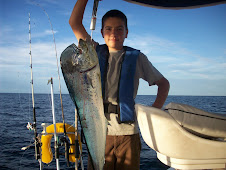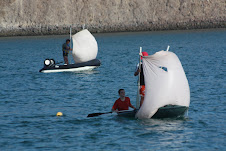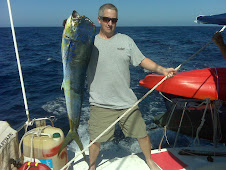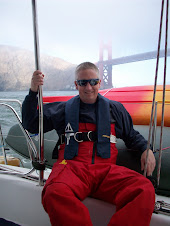We just received the following comment on our blog and I thought it would be fun to turn it into a posting.
".....By the way, I would be interested in your thoughts on your Lagoon38 in so
far as compared to other multihulls you've seen up close. Is your boat too this,
too that, just right? Ahh heck, let's include lead mines too. How things
compared to them. Also, any anchorages down there where you've been especially
happy to have shallow draft?"
Since I've been living on this boat for three years, this is a topic that I have thought a lot about. I have a love/hate relationship with my boat. I think most people living on a boat for several years would understand what I mean. I have spent hours pondering the ways I wish I could change it, and I have spent hours pondering how much I love it the way it is.
Here are the positives I see with our Lagoon. The 2001 380 model is very well built for a production boat. We have beefy winches, solid construction, and lots of wood paneling. Our friend who is a delivery captain compares the 2001 380 model to a "bull." He raves about how strongly it is built. He has done numerous Atlantic Ocean crossings on this model and still marvels at its construction. One time he had 40+ knots on the nose for days and had to pour fresh water over the helm station to get the salt crust off, just to be able to read the instruments, and the boat took it no problem.
I don't know how much has changed for the Lagoon 380, since I have not been on a new one, but I have been on new Fountaine Pajots and I was
not impressed. We were on a new Mahi model and everything was just kind of wimpy from the winches down to the decking. The winch torqued on the fiberglass when it had a load on, and the deck dipped when you walked on it - it was just not very sturdy feeling. On the positive side, it was
absolutely gorgeous inside with great design. I've been on similar sized, older Fountaines and they were sturdily built, but their interior design was not much different than an older Lagoon except that our staterooms are bigger and their cockpit was bigger.
Another positive is the Lagoon has a high bridge deck (the area between the hulls) which is a must in a my opinion. The lower your bridge deck is to the water, the more often it gets slapped by waves. Some catamarans like the Seawind and the Gemini have pretty low bridge decks and they must be really loud on the rougher passages. Sometimes when we are crossing from La Paz to Mazatlan we have been in bigger seas that are hitting us at just the right angle to make the waves slam our hulls like a giant banging on bongos. It reverberates through the boat. It is loud. I can't imagine what those conditions would be like in a boat that is lower to the water. We usually never hear that.
Also a positive, the Lagoon 380 is a pretty simple boat to sail. It's not intimidating with lots of line, rigging or sails. We have only two sails - the main and a genoa. All lines lead to the cockpit and it could easily be sailed by a single-hander. It's a piece of cake to handle for a couple. The main is pretty big so a power winch is nice to get it raised. The helm is raised so you can see over the top of the cabin to view anything coming at you (something you can't do on the 38 Seawind) on both sides. The twin engines make handling in tight quarters or strong winds very easy. You can do a 360 degree turn in place.
Here's what I don't like about our boat. In my opinion the designers of the 2001 interior space put too much emphasis on looks and not enough on function, practicality or good use of space. When you take the wood paneling off in every stateroom you find large areas of dead space not used for anything. They could have utilized this space for tons more practical storage of all the small things you have when you live on a boat - book shelves, storage compartments, clothing cubbies - you name it. There is wasted dead space all over the boat and that is frustrating when you are living on it.
The curved settee of the dining area of our boat is a travesty and should be abolished. You can't sleep on it during rough watches. There are times when I wish that the off-watch person could be closer to the helm to keep an eye on the on-watch person. You just can't do it because the only place to sleep is in your bedroom. The curved settee is also a pain in the ass because there is no place to "flop" and read a book with your legs up except in your bedroom. There is no seating with a straight back in the entire boat and it is impossible to get comfortable for lounging, reading or movie watching unless you are in your bedroom. You get the picture - the only comfortable seating is propped up on your bed with pillows. The dining table should be able to be reduced with fold down leaves or be able to be lowered or rotated. The outside table should be the same way. The seating outside around the cockpit is also formed by curved fiberglass and it too, is very uncomfortable to sit at for long.
For comparisons, I have been on newer Seawinds, newer and older Fountaines, older Catanas and a new Leopard. The newer boats of those makers have absolutely lovely interior design and use of space. The older catamarans of all the companies were very similar in design, and did not have all the thoughtful finishing touches like the newer ones did.
The Leopard was the one catamaran that I thought was impressive for several reason. It was lovely on the inside with lots of thoughtful touches. Like a lot of new models, it had a very nice kitchen down in a pontoon which leaves much more room in the main area for comfortable seating and entertaining. It is an interesting idea to me, but I am not sure it would be good underway in rougher weather since I get seasick. Being able to pop easily into and out of the kitchen when it's rough is nice for me.
My favorite thing about the Leopard was in the forward pontoons in the bow. Our bows are two "watertight" areas that are supposed to keep the boat afloat if it's taking on water. They are cavernous spaces that we throw lots of junk into (floaties, extra fishing poles, storm sail, etc.) It all ends up in a heap on the curved floor. I wonder if it will still keep us afloat because we have so much stuff crammed in there willy-nilly. What if there was a hole in the bow? How would we get to it through all our junk? The Leopard has the same watertight bow areas but on the Leopard the bottom third is taken up with a fiber-glassed in flotation foam. This provides a very nice flat floor for putting your stuff down on and cuts down the amount of room you get to stuff things into. Also common sense tells me that the most likely place you are going to get a hole would be in the lower forward section of your bow from running into a rock. The fact that the smaller glassed in flotation foam area would cut down on the amount of boat that could flood seems like a good idea to me, even though you would only be able to patch the hole from the outside of the boat.
Obviously, I am not a boat builder and have no real knowledge about boat design. I only know what I have learned from three years of observation and living on one. I really appreciate the sturdiness of our boat and the ease of use. It sails pretty good in my opinion (though that is something I don't know much about.) All of my real complaints are about cosmetic things which affect my comfort and if we wanted to spend some money, we could fix. So, all in all, I would have to say this Lagoon has been a great boat for us.
Regarding anchorages - there are few anchorages in the Sea of Cortez that we have found which are
only accessible to shallow draft boats. The only one that comes to mind is Teacapan. There are some anchorages that deep draft boats have to pay attention to tides like the pond at Estanque. In most anchorages, we anchor close in to shore in 6 - 15 feet of water and that affords us more protection and less wind, but the deeper draft boats are there with us, just anchored out at 20 feet.




 We were so grateful to see beautiful forests again. Most of our pictures are of trees and we kept pulling over to take little hikes in the woods.
We were so grateful to see beautiful forests again. Most of our pictures are of trees and we kept pulling over to take little hikes in the woods.
 We were so grateful to see beautiful forests again. Most of our pictures are of trees and we kept pulling over to take little hikes in the woods.
We were so grateful to see beautiful forests again. Most of our pictures are of trees and we kept pulling over to take little hikes in the woods.
























